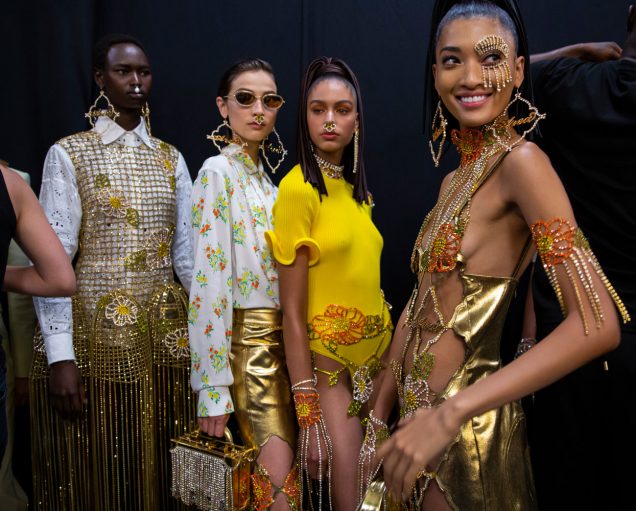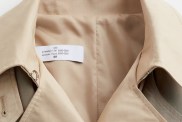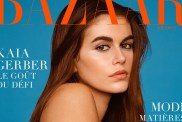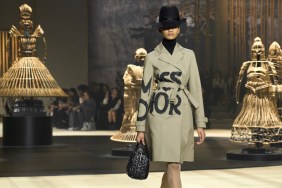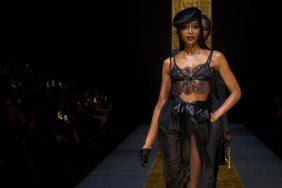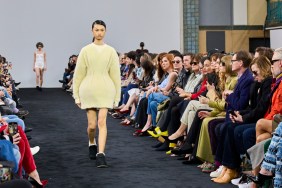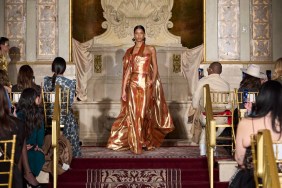We’re now in the final hours of the Spring 2020 runway season and based on the improvements seen in New York alone, we can already predict it will be one of the most diverse yet. (More often than not, the city has the most progressive castings of the four fashion capitals and so typically skews the stats.) Read on for details.
RACE
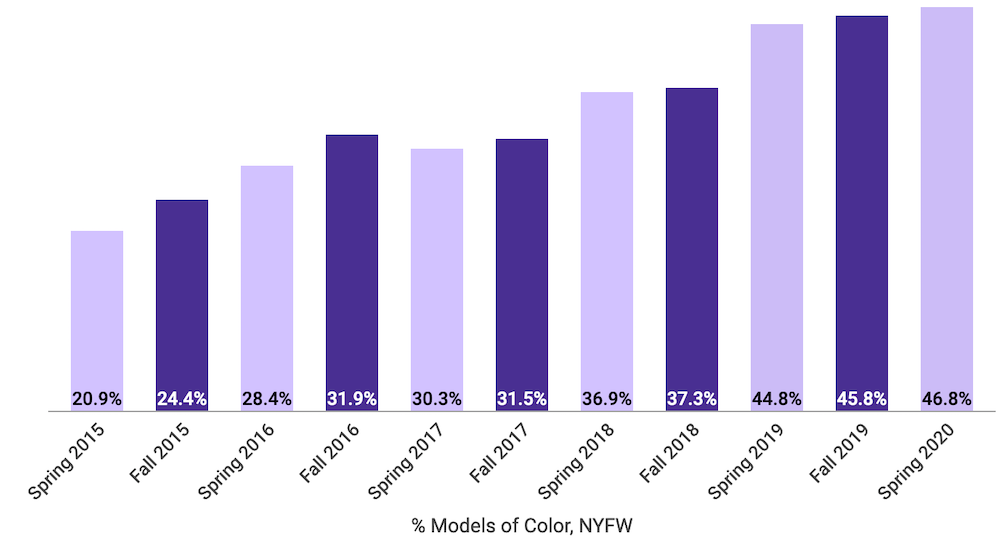
There was more racial diversity on the runways at New York Fashion Week this season than has ever been seen before. Nearly half of the models cast in New York shows were people of color.
After reviewing 2,327 model appearances across 78 major shows, we can report that, for the Spring 2020 season, 46.8 percent of those on New York runways were models of color, a one point gain over Fall 2019. (Interestingly enough, that’s the exact same increase as in the previous season. Between Spring 2019 and Fall 2019, racial diversity on the runways grew from 44.8 percent to 45.8 percent.)
When we first began tracking the numbers in 2014, nonwhite models made up only 20.9 percent of Spring 2015’s castings. Cut to the present and that number has more than doubled.
Racial diversity on the runways has been slowly but steadily improving since Spring 2018, at least when it comes to New York. Additionally, this is the first season wherein nonwhite models have accounted for over 46 percent of castings and the sixth(!) to see every New York runway show feature at least one model of color. (In fact, no show had less than two.)
Also, New York’s runways trounced the most recent ad season in terms of diverse representation. (For Fall 2019, we counted only 39.3 percent campaign models of color. And that was an all-time high.)
Even more good news: transgender and non-binary models were more popular this season than last and plus-size models had their best New York Fashion Week to date. (But it was a stagnant season for models age 50 and up.)
TOP MODELS
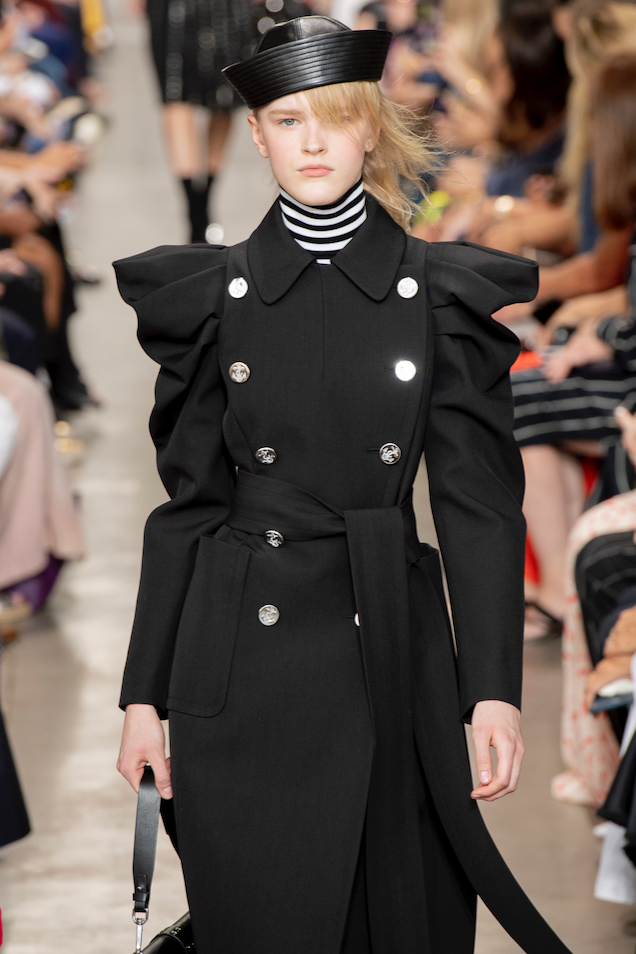
Last season, all but one of the week’s 10 most in-demand models were women of color. Such was not the case this season. Of the 13 models who walked the most New York Fashion Week Spring 2020 shows, the majority (nine) were white. (In other words, a little over 69 percent.)
British model Hannah Motler, who is white, appeared in 13 shows, the most of any model. With 12 castings, American model Rebecca Leigh Longendyke (also white) was the week’s second most popular model. In third place were Abby Champion (also American, also white) and Lara Mullen (British and white). Both walked in 11 shows.
Fourth place was a nine-way tie between Adut Akech, Anok Yai, Lineisy Montero, Cyrielle Lalande, Juliane Grüner, Kiki Willems, Felice Noordhoff, Sasha Komarova and Sora Choi, each of whom walked in 10 shows. Thus entered some ethnic diversity: Akech and Yai are of South Sudanese origin, Montero is Dominican and Choi is Korean.
Per tradition, gender, size and age diversity were completely absent from the top models list.
PLUS-SIZE
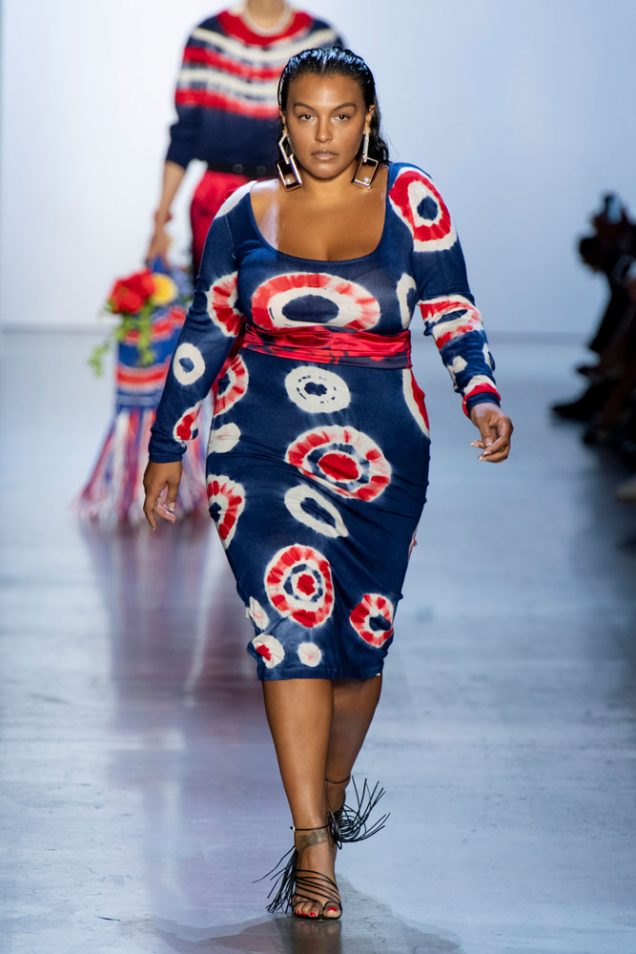
New York’s Spring 2020 runways made historic progress on the body diversity front. Casting of plus-size models hit an all-time high, coming in just below the 3 percent mark. (A tiny milestone, but a milestone nonetheless.)
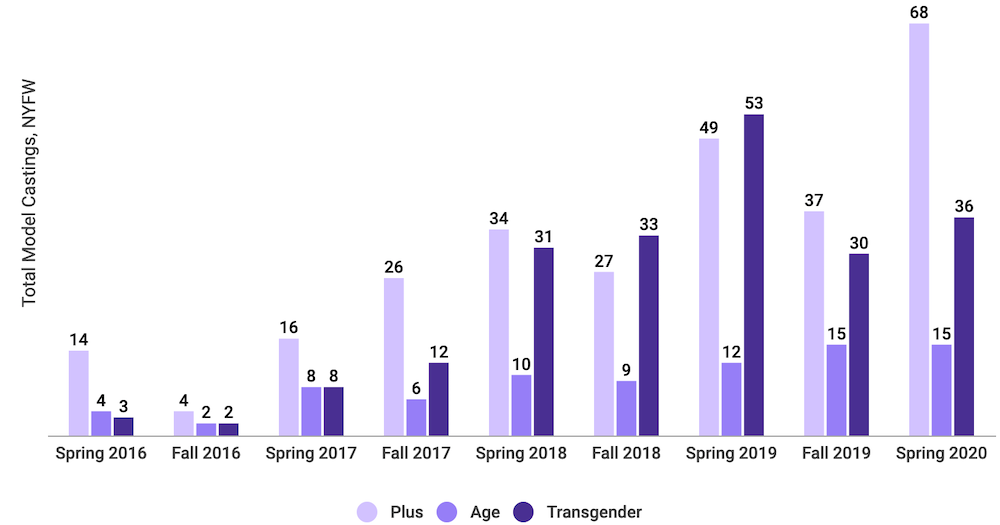
Rebounding from a relatively poor Fall 2019 season during which only 37 plus-size models (1.68 percent) appeared in 12 shows — a 0.54 percent drop from the season prior when 49 plus-size models (2.22 percent) were cast across 12 shows — for Spring 2020, a record 68 plus-size models (2.92 percent) walked a total of 19 shows. That’s 1.24 percent higher than Fall 2019 and 0.7 percent above Spring 2019, the previous record holder.
It’s telling that more than 1.5 times as many shows as last season featured plus-size models after years of the same 8 to 12 designers making all the week’s size-diverse hires.
That said, the vast majority of designers included no plus-size women in their shows. What’s more, 41 of the week’s plus-size castings were concentrated in just three shows: Chromat, Tommy x Zendaya and Christian Siriano.
Chromat, which has effectively set the standard for inclusive casting with its groundbreaking runway shows, contributed the highest share of the total. Eighteen plus-size models walked in the label’s 10th-anniversary show, including Tess Holliday, Denise Bidot, Hunter McGrady, Jari Jones, Emme, Khrystyana Kazakova, Kimberly Drew, Mia Michaels, Ariel Pierre-Louis, Ericka Hart, Jazzmine Carthon, Jovanna Albino, Priscilla Huggins Ortiz, Sonny Turner, Veronica Pomeé and Victoria Gomez. Note that 12 of Chromat’s plus-size hires were nonwhite, one a transgender woman of color (Jones), two (Emme and Michaels) above age 50.
In casting its latest runway show staged at Harlem’s historic Apollo Theater, design collaborators Tommy Hilfiger and Zendaya explicitly sought to use models of all sizes and body types. As a result, the second (and final) Tommy x Zendaya show was the second-most size-diverse of the week with 12 plus-size runway models: Candice Huffine, Ashley Graham, Precious Lee, Chloé Véro, Melonee Rembert, Solange van Doorn, Stephanie Rosa, Yvonne Simone, Ingrid Medeiros, Jennifer Atilemile, Seynabou Cissé and Hayley Foster. All but two (Huffine and Graham) were women of color.
In third place with 11 plus-size castings was Christian Siriano, one of the few designers to make size inclusion a priority every single season. Huffine, Lee, Simone, Véro, Marquita Pring, Abbie Fleener, Molly Constable, Sabina Karlsson, Cissé, Alessandra Garcia-Lorido and Atilemile hit the runway in Siriano’s red carpet-ready collection. Of the 11, eight were women of color. (All except Huffine, Fleener and Constable.)
The group’s 27 remaining castings were divided between 16 shows: Kate Spade New York (Drew, Stella Duval and Jill Kortleve), Tadashi Shoji (Huffine, Pring and Ali Tate Cutler), Area (Kortleve, Tehya Elam and Betsy Teske), Burnett (Simone, Medeiros and Cutler), Michael Kors Collection (Kortleve and Karlsson), Prabal Gurung (Kortleve and Paloma Elsesser), Collina Strada (Drew and Theresa Chromati), Marc Jacobs (Alexis Ruby), Gypsy Sport (Jones), Vivienne Hu (Kazakova), The Blonds (Bidot), Matthew Adams Dolan (Lee), Adam Lippes (Elam), LaQuan Smith (Elam), Dennis Basso (Ashley Longshore) and Eckhaus Latta (Elsesser).
For Tadashi Shoji, Area, Burnett, Michael Kors Collection, Prabal Gurung, Eckhaus Latta and Gypsy Sport, size diversity is now a regular feature of their runways. This is the second consecutive season that Tadashi Shoji has hired three plus-size models, the second in which Area and Burnett have hired two or more, the sixth in which Michael Kors Collection and Prabal Gurung have hired at least one, the fifth in which Elsesser’s walked for Eckhaus Latta and, when it comes to Gypsy Sport, well, we’ve lost count. Rio Uribe always puts diversity (of all kinds) front and center.
On a related note, it’s partially thanks to Uribe that New York’s plus-size castings featured more intersectional diversity than usual. Of the 68 plus-size models booked, 72 percent (49) were women of color. (With four runway appearances, Dutch-Surinamese-Indonesian-Indian beauty Kortleve was the week’s most in-demand plus-size model.) Two were over the age of 50 (Emme and Michaels at Chromat). And Jones, who is black and openly identifies as transgender, walked for Chromat and Gypsy Sport.
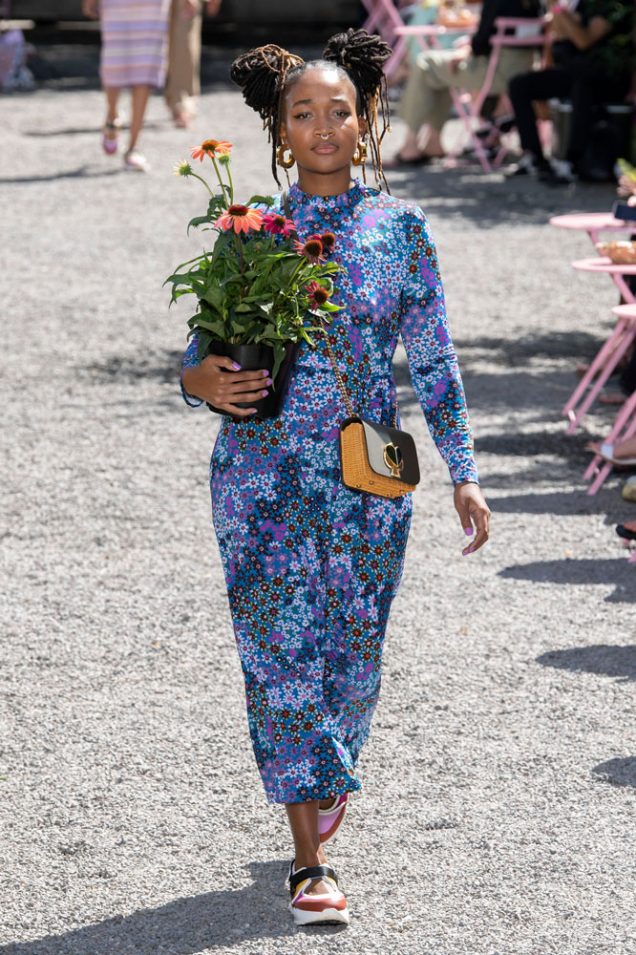
As to how all this data stacks up against the most recent ad campaign stats, size representation was down last ad season from 2.08 percent (11 plus-size castings) in Spring 2019 to 1.94 percent (nine castings) in Fall 2019. Forty-four percent (four) were women of color, all were cisgender and under 50.
All things considered, the changes in this category were small but important. It was a record-breaking week: more plus-size models walked — and in more shows! — than ever before. Still, it’s problematic that these women still make up fewer than 3 percent of castings and that, for Spring 2020, over half of those castings took place between three shows.
TRANSGENDER/NON-BINARY
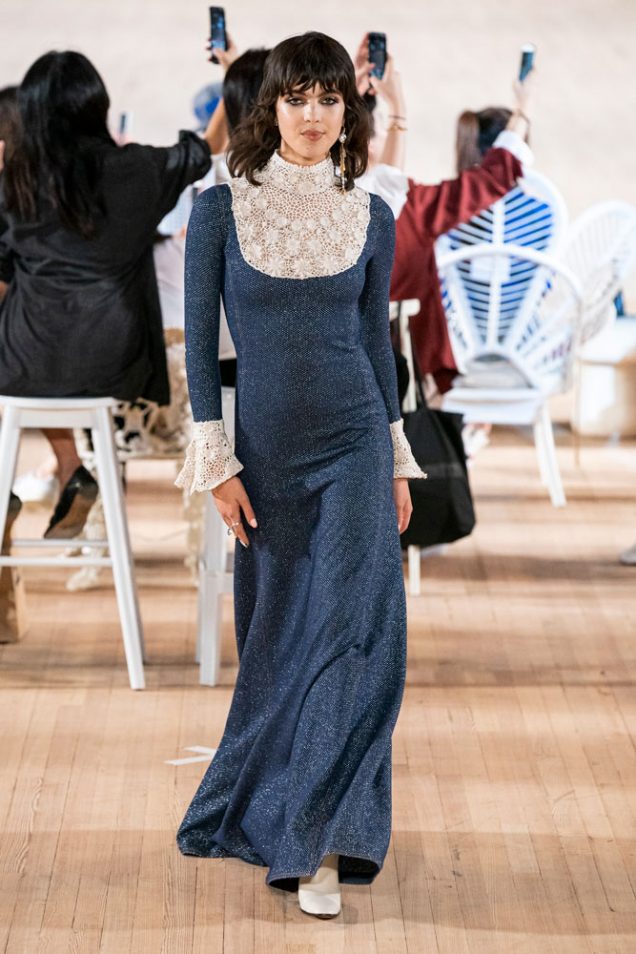
Transgender and non-binary models also experienced an increase in visibility. Of the 2,327 show castings considered in this report, 24 went to openly male-to-female transgender models and 12 to non-binary models for a total of 36 gender-inclusive castings (1.55 percent) across 19 New York shows.
That’s up from 1.4 percent in Fall 2019 when 21 male-to-female transgender and nine non-binary models (30 total) walked in 17 shows. Granted, that’s not a great improvement, but it is a positive step, especially after last season’s setbacks.
A little background: after Teddy Quinlivan came out as transgender in September 2017, for the next year the number of openly male-to-female transgender and non-binary model castings hovered around the low 30s with 31 in Spring 2018 and 33 in Fall 2018. Then, in Spring 2019, casting of models in this category rose to a record high of 53 before backsliding to, as stated above, 30 in Fall 2019.
Sadly enough, transgender and non-binary representation on the runways is typically so low that Spring 2020’s slight gains in this category actually made it the second-most gender-inclusive New York Fashion Week to date. (It lags 0.86 percent behind Spring 2019.)
Furthermore, small though it was, the week’s 1.55 percent inclusion rate also topped that of the most recent ad season (by 0.26 percent). Only 1.29 percent of Fall 2019’s ads featured an openly male-to-female transgender model and no non-binary models were cast. (Though it’s worth mentioning that this was the only category aside from models of color to see any improvement in campaign representation between Spring 2019 and Fall 2019.)
As to where New York’s bookings occurred, diversity all-stars Chromat and Gypsy Sport (unsurprisingly) led in terms of gender inclusion. Together, the brands contributed 14 (about 38.9 percent) of the week’s male-to-female transgender and non-binary model appearances with seven at each show.
Chromat alums Maya Monès, Geena Rocero, Carmen Carrera and Eddie Jarel Jones returned for Spring 2020, this time joined by model and activist Jari Jones (who also happens to be plus-size), actress, DJ and activist Lina Bradford and famed drag queen West Dakota. (They and Eddie Jarel Jones identify as non-binary.)
Gypsy Sport also enlisted the talents of Jari Jones and West Dakota as well as those of actress Gisele Alicea, music artist Vesolo Ofa, 80s icon Connie Fleming, model, filmmaker and Real World alum Ari Fitz and Chicago-based trans drag performance artist Imp Queen.
David and Phillipe Blond, who also have an excellent track record of delivering remarkably gender-diverse, not to mention outrageously entertaining, runway shows, featured two models in this category in addition to Phillipe: Gigi Gorgeous and Leiomy Maldonado.
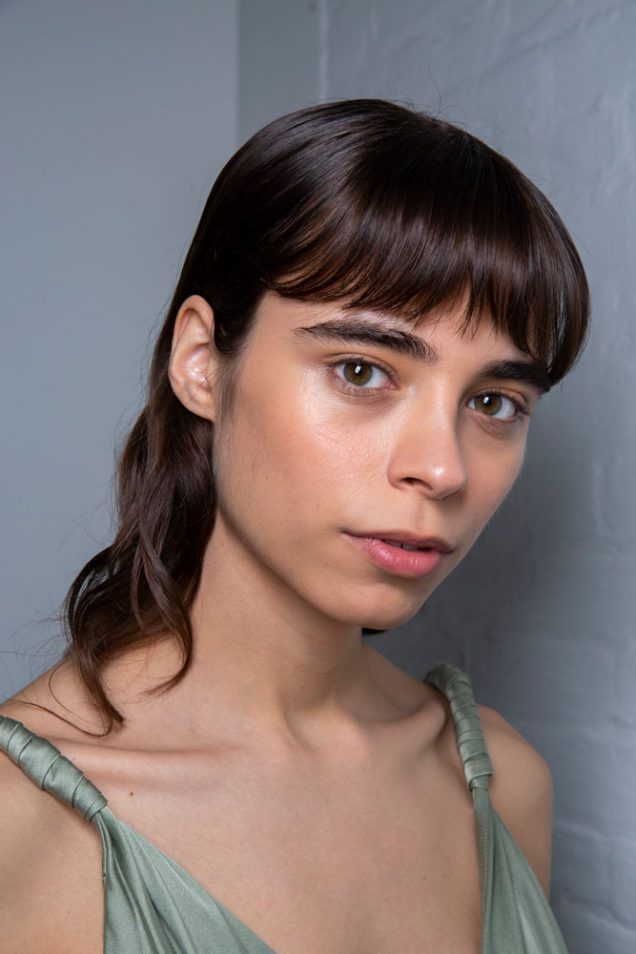
Encouragingly, the remainder of the city’s male-to-female transgender and non-binary model castings were spread across some of its hottest-ticket shows. Non-binary model Noah Carlos, the most booked in this category, walked for Helmut Lang, Marc Jacobs, Michael Kors Collection, Coach 1941, Jeremy Scott, 3.1 Phillip Lim, Prabal Gurung and Self-Portrait. Massima Desire, the week’s most in-demand trans model, made appearances at Jonathan Simkhai, Dion Lee, Priscavera and Lou Dallas.
Other notable sightings included Dara Allen at Dion Lee and Prabal Gurung, Quinlivan at Helmut Lang, Hari Nef at Eckhaus Latta and Muse signee Dusty Rose Ryan at Kate Spade New York.
Unfortunately, you don’t have to look far to see the tokenism in these hirings — a third of the jobs went to the same two models. On the bright side, Spring 2020’s castings in this category did feature a touch more intersectional diversity than last season. About 61 percent (22 out of 36) of those cast were nonwhite and transgender, plus-size, black model Jari Jones walked in two shows. But, as in Fall 2019, not one brand hired a transgender model age 50 or above.
Still, the fact that transgender and non-binary models continue to land such high-exposure runway work and that their numbers are back on an upward course, gives us reason to hope.
AGE
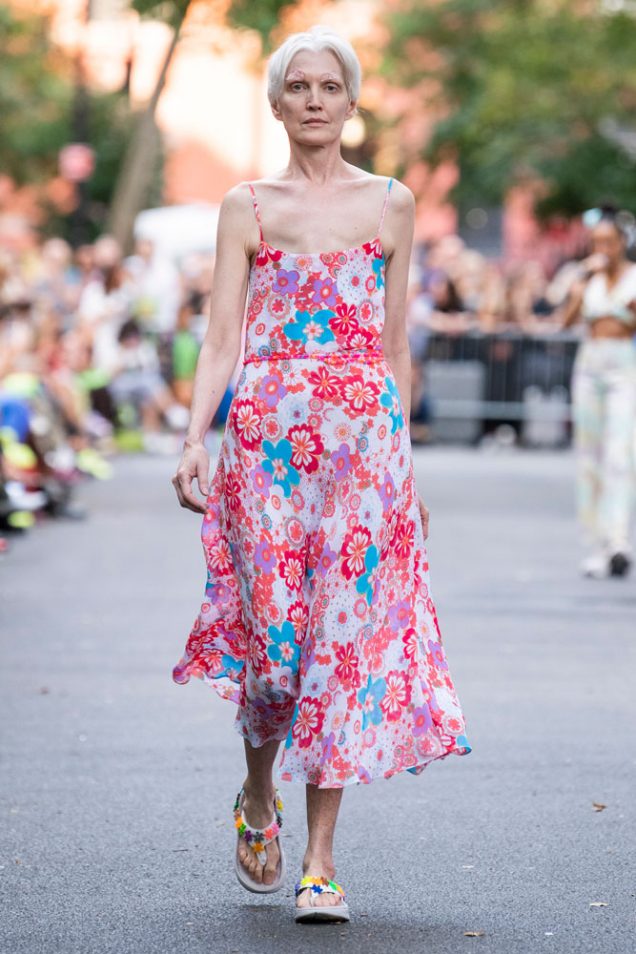
Women age 50 and above were the only category to see a decline in runway representation — albeit a very, very slight one — this season as compared to last. (Strange, given that for Fall 2019, this was the only category outside of race to see any growth.) Not surprisingly, they were also the least visible of all the groups measured in this report as has been the case since Fall 2017.
That aside, models in the 50 and over range did have a relatively strong New York Fashion Week. In fact, it was their second-best casting season yet and by a margin of only 0.03 percent.
For Spring 2020, 15 models in the age group walked a total of 10 shows, accounting for a mere 0.65 percent of castings. That’s as many as during Fall 2019, however, that season’s 50-and-over castings made up 0.68 percent of the total and took place between 13 shows.
Nicole Miller featured three models in this category — namely Pat Cleveland, Frederique van der Wal and Veronica Webb — the most of any New York show. Why? All three have a personal connection with the designer. “Pat Cleveland was the first model I met in New York when I was interning for Clovis Ruffin; Veronica walked my very first show,” Miller told Vogue.
Chromat, typically the only brand to hire any plus-size women over the age of 50, cast two: Emme and Mia Michaels. Tommy Hilfiger and Zendaya’s sophomore show likewise featured two 50-plus models (Webb and JoAni Johnson) as did Kate Spade New York (actress Debi Mazar and Accidental Icon blogger Lyn Slater).
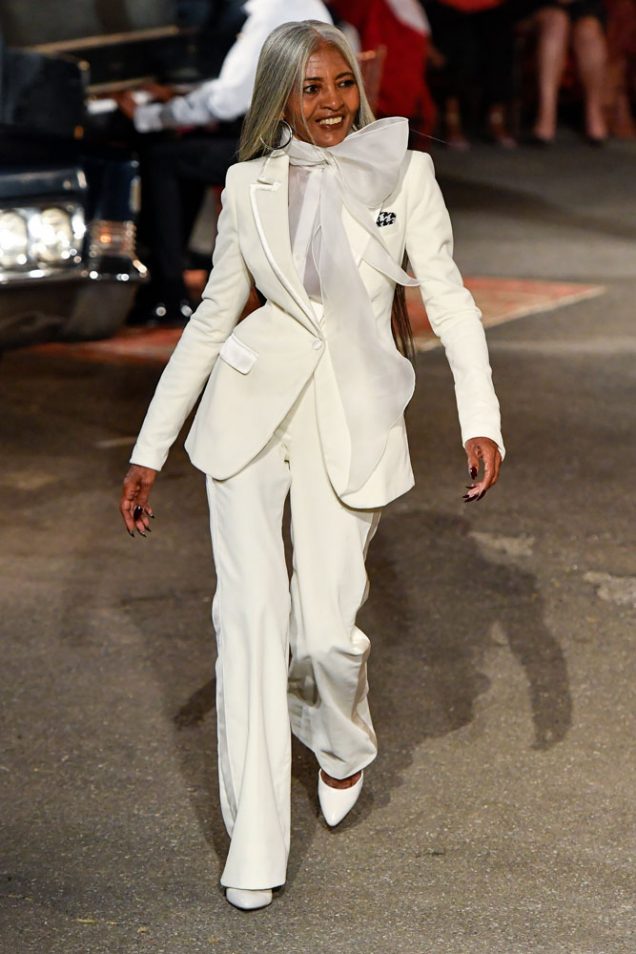
As for the remaining castings, Kathleen McCain Engman walked for Collina Strada, Maye Musk for Christian Siriano, Anette Marweld for Libertine, Carol Alt for Zang Toi and artist and fashion designer Susan Cianciolo for Maryam Nassir Zadeh and Eckhaus Latta. (Bear in mind Chromat, Eckhaus Latta, Collina Strada and Maryam Nassir Zadeh regularly prioritize age diversity.)
Once again, there was very little diversity within the week’s 50-and-over castings. Only four went to women of color (Webb, Johnson and Cleveland) and none to a transgender or non-binary person. Also, as mentioned above, Chromat remains the only New York Fashion Week show where plus-size women over age 50 walk.
Generally speaking, it seems designers’ efforts toward age representation have stalled. Not only did 50-and-over models walk in fewer shows, several high-profile fashion brands — Marc Jacobs, Hellessy, Michael Kors Collection and Naeem Khan — that hired veteran models last season neglected to do so in Spring 2020.
This view is further supported by the fact that the number of 50-and-over castings also decreased during the most recent ad season. Fall 2019’s campaigns featured only 10 models age 50 and over (2.16 percent), down from 15 (2.84 percent) a season earlier. (Needless to say, percentage-wise, the seasonal ads are still doing far better than the runways when it comes to age representation.)
MOST AND LEAST DIVERSE SHOWS
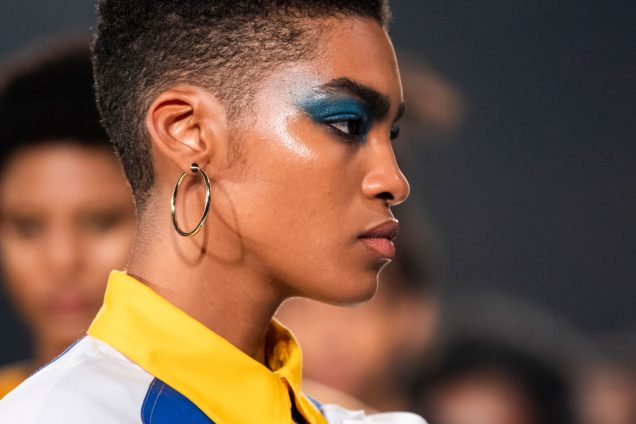
Gone are the days when New York’s runway shows included no or only one token model of color. For Spring 2020, over a quarter (22 out of 78 or 28.2 percent) of the city’s shows featured a 50 percent (or more) nonwhite model lineup.
Which shows saw the most racial diversity? In descending order: Pyer Moss (100 percent models of color), Tommy x Zendaya (87.3 percent models of color), Gypsy Sport (82.4 percent models of color), Chromat (77.1 percent models of color), Matthew Adams Dolan (72.2 percent models of color), Gabriela Hearst (71.4 percent models of color), Prabal Gurung (70.8 percent models of color), LaQuan Smith (63.6 percent models of color), Helmut Lang (61.5 percent models of color), Area (60.7 percent models of color), 3.1 Phillip Lim (60 percent models of color), Zimmermann (60 percent models of color), Brandon Maxwell (59 percent models of color), Self-Portrait (56.7 percent models of color), Tom Ford (55.6 percent models of color), Jonathan Cohen (54.2 percent models of color), Burnett (53.8 percent models of color), Zero + Maria Cornejo (52.6 percent models of color), Michael Kors Collection (52.6 percent models of color), Tory Burch (51.5 percent models of color), Christian Siriano (50 percent models of color) and Dion Lee (50 percent models of color).
That said, some New York shows were still noticeably lacking in racial diversity — namely Son Jung Wan, Vivienne Hu, Badgley Mischka and Zang Toi, which cast 2 out of 16 (12.5 percent), 2 out of 15 (13.3 percent), 6 out of 32 (18.8 percent) and 3 out of 15 (20 percent) models of color, respectively. (Though, to be fair, Vivienne Hu was one of the few brands to feature a plus-size model and Zang Toi one of the 10 to hire a model age 50 or over.)
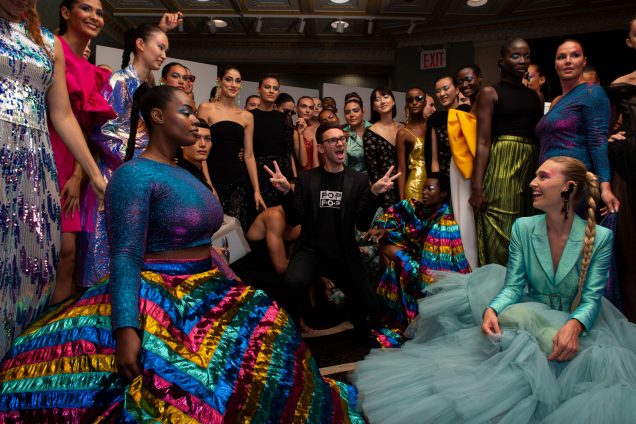
As mentioned earlier, we (thankfully) haven’t seen an entirely white show since before the Fall 2017 season. What’s more, for Spring 2020, more New York shows than ever before — many of them labels with global reach — made it a point to feature models of a broad array of cultural identities and take intersectionality into account. They were (in no particular order) Chromat, Tommy x Zendaya, Christian Siriano, Gypsy Sport, Burnett, Kate Spade New York, Prabal Gurung, Michael Kors Collection, Collina Strada, Eckhaus Latta and The Blonds. (Gypsy Sport, Chromat, Christian Siriano, Eckhaus Latta and Burnett repeatedly make this list.)
Per tradition, Chromat’s lineup featured models of all ages, body types, ethnicities, gender identities and abilities. With 77.1 percent models of color, six transgender and/or non-binary models and 18 plus-size models (two of them over the age of 50, one of them a transgender woman of color), it was the fourth-most racially diverse show of the week, the second-most age-inclusive, the most size-inclusive and one of the two most gender-inclusive.
With 82.4 percent models of color, six trans and/or non-binary models and two plus-size models (including Jari Jones, the black trans woman who walked at Chromat), Gypsy Sport was the third-most ethnically diverse show of the week and tied Chromat for the most gender-inclusive.
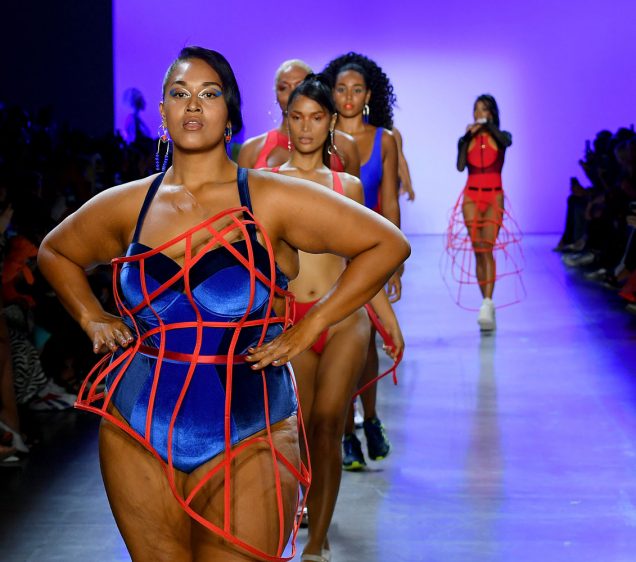
In addition to hiring 87.3 percent models of color and two women age 50 or above, Tommy x Zendaya contributed 12 of the season’s plus-size castings, the second-most of any New York designer. Christian Siriano, meanwhile, cast 50 percent models of color, one model age 50 or above and 11 plus-size models. (His was the third-most size-inclusive show of the week.)
Burnett had 53.8 percent models of color, three plus-size models and one trans and/or non-binary model; Kate Spade New York featured 38.2 percent models of color, three plus-size models, two women age 50 or above and one transgender model. Prabal Gurung and Michael Kors Collection, two New York labels with huge name recognition, each hired two plus-size models and one non-binary model. Gurung’s cast was 70.8 percent nonwhite, Kors’ 52.6 percent.
Eckhaus Latta’s runway featured 40.7 percent models of color, one plus-size model, one 50-or-above model and one transgender model. It was one of the few shows to check every diversity box. Rounding out the list, Collina Strada had 48 percent models of color, two plus-size models and one 50-or-above model, The Blonds 40.9 percent models of color, one plus-size model and three transgender and/or non-binary models (more than most other shows this season).
While the full cast of Rihanna’s Amazon-sponsored Savage x Fenty spectacular was kept largely under wraps (and therefore not considered in this report), we’d be remiss not to acknowledge the pop-star-turned-designer’s runway show/multidisciplinary performance piece featuring models of various body types, gender identities and skin tones, including Laverne Cox, Paloma Elsesser and a glowingly pregnant Ashley Graham.
There’s no question that industry standards are changing. Not too long ago the idea that New York’s runways could have a nearly 50-50 ratio of white to nonwhite models — or that plus-size women could walk in 19 of the season’s shows — would’ve been unimaginable. Still, the work’s far from over. The percentage of size-, gender- and age-diverse castings, especially the latter, needs significant improving. Hopefully, in the near future, we’ll see undreamed-of progress in those categories, too.
Additional reporting by Mark E.
Only women and non-binary models are included in this data. Models of color are categorized as those who are nonwhite or of mixed backgrounds. Fall 2019 collections that showed during the Spring 2020 season are included in this report.
